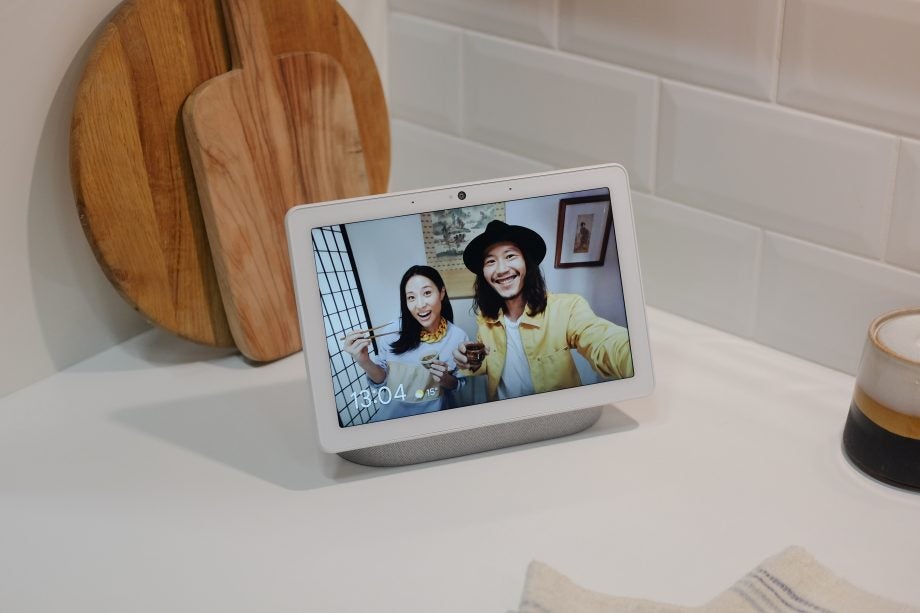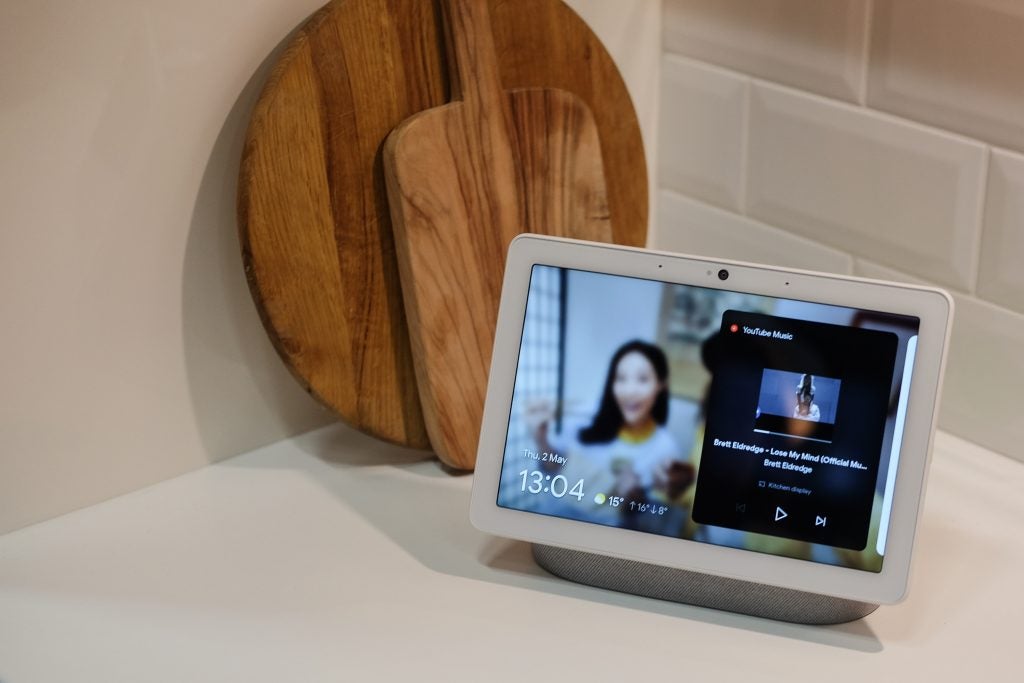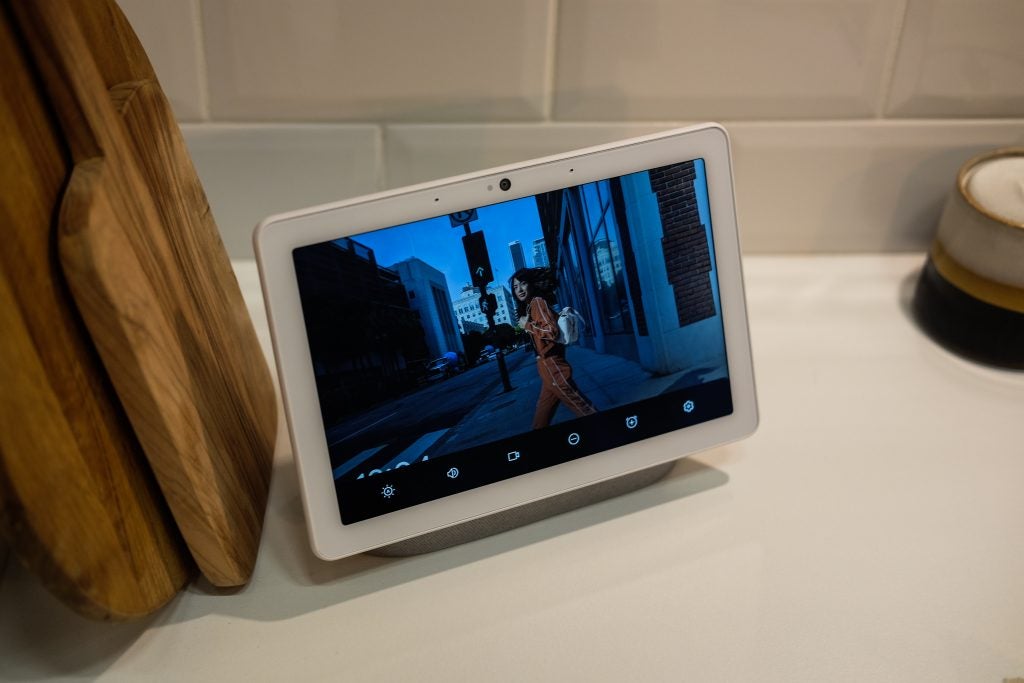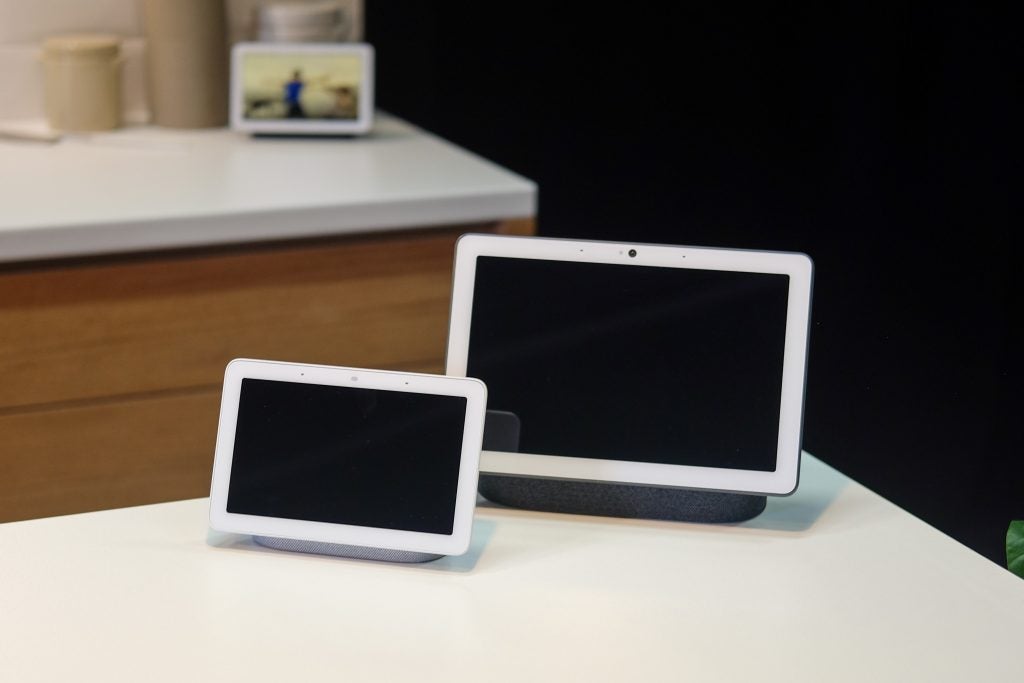First Impressions: Google Nest Hub Max Review
First Impressions: Google Nest Hub Max
Bigger, louder and with a camera

First Impressions
A larger version of the Home Hub was always going to be a natural progression, and the Nest Hub Max does enough with its extra real-estate. It’s bigger not only in size, but offers more full-sounding audio and a greater set of features.
Key Specifications
- Review Price: £219
- 10-inch HD screen
- Nest camera
- Improved audio
- Duo video calling
Google Nest Hub Max is now official: updating the original smart display with a bigger screen, better audio and more.
At I/O 2019, Google is making a big change to its Nest portfolio. Rebranding its existing Google Home Hub to the Google Nest Hub, the company is launching a bigger model with a host of new features.
Ahead of Google’s huge developer conference, I had the opportunity to spend some time with the new products it will be announcing. One of those products is the Pixel 3a, and the other is the Google Nest Hub Max.
Simply put, this is a larger version of the Google Home Hub (which itself has been rebranded as the Google Nest Hub), with a bigger focus on audio and security. While it adds some extras, the main premise of the device remains that it’s a hub for connecting your smart home gear and offers control of them all via the Google Assistant.
Google Nest Hub Max price and release date
The Google Nest Hub Max will cost £219 and be available in the Google Store, John Lewis, Argos and Currys PC World this summer.

Google has taken the original Home Hub and enlarged it, keeping the overall look pretty much the same. The screen looks like it’s floating, attached to a textured fabric base. It has a simple look that works well for a product designed to sit and blend into the kitchen or lounge.
The 7-inch display of the original Hub has been replaced with a larger, more pixel-dense 10-inch version. The bigger screen helps this become more of a communal device or one on which you can watch videos rather than simply acting as a digital frame. The 1280 x 800 resolution isn’t as high as you’d expect on a tablet, but it looks good and you’ll unlikely get as close to the Nest Hub as you would an iPad Mini, for example.
Having said that, Lenovo fitted a Full HD into its Smart Display 10”, which also has a portrait mode and a physical privacy switch for the webcam.
Arguably the best feature of the Home Hub was its ambient display mode. This clever feature altered the colour temperature of the screen according to the level of light in your room, to give pictures an almost printed photo quality. The ambient display remains and it looks as good as it did previously.

A new feature for the Max is the addition of a camera on the front of the device, just above the display. The inclusion of a camera that’s always on and always listening for certain phrases has raised issues in the past, with Google gaining plenty of goodwill for deciding against such a feature on the Home Hub.
As such, its decision to add one here – minus a physical slider to cover it up – might cause some concern. During my briefing, Google reps were quick to point out that the company won’t sell data collected by the Hub, plus there will be provision made to remove any data saved on the device through a series of in-depth options. It’s also possible to completely disable the camera; however, this will limit the Hub Max’s functionality.
The camera really adds to what the Nest Hub Max can do. You can video chat through Google’s FaceTime rival Duo, or leave a short video message. Google has also built some gestures into the Nest Hub, such as holding up your palm to pause music. These are all nice touches, but the real power of the camera comes from the Nest integration.
Related: How to set up Google Duo on Google smart displays

Nest is Google’s smart home arm, featuring products such as the Nest Thermostat and Nest Cam IQ Indoor camera in its arsenal. Even though Google has owned Nest for years, it’s been reticent to really use the Nest branding on its own products. Until now, that is.
The Nest Hub Max uses its 6-megapixel camera and its 127-degree lens to add some of the features you’d associate with Nest’s home security cameras. You can directly access the camera via the Nest app; it smartly zooms and moves, following a person around a room. You can also pay £4 a month or £40 a year for Nest Aware to record five-days’ worth of footage, with the system supporting continuous recording, rather than just saving clips triggered by motion.
Obviously, the form-factor of the Nest Hub Max doesn’t necessarily suit a home security camera – there would be little point having this device in a hallway, or by the front door – and Google is angling this more as an extra piece of mind, rather than a full security system. For that purpose, I can see it succeeding.
To better integrate Nest services Google is letting you, if you wish, combine a Nest account and your Google account, leaving you with a single login for both.

Another benefit of the Hub Max’s larger size is a bigger focus on audio. While the Home Hub sounded fine for podcast or radio, it lacked the punch needed for music. The Nest Hub Max fares much better, thanks to a 2.1 setup with a dedicated sub. This isn’t going to trouble the Sonos One for sound quality, but it fills a small room well, can get very loud and has good bass response.
A larger version of the Home Hub was always going to be a natural progression, and the Nest Hub Max does enough with its extra real-estate. It’s bigger not only in size, but offers more full-sounding audio and a greater set of features.


